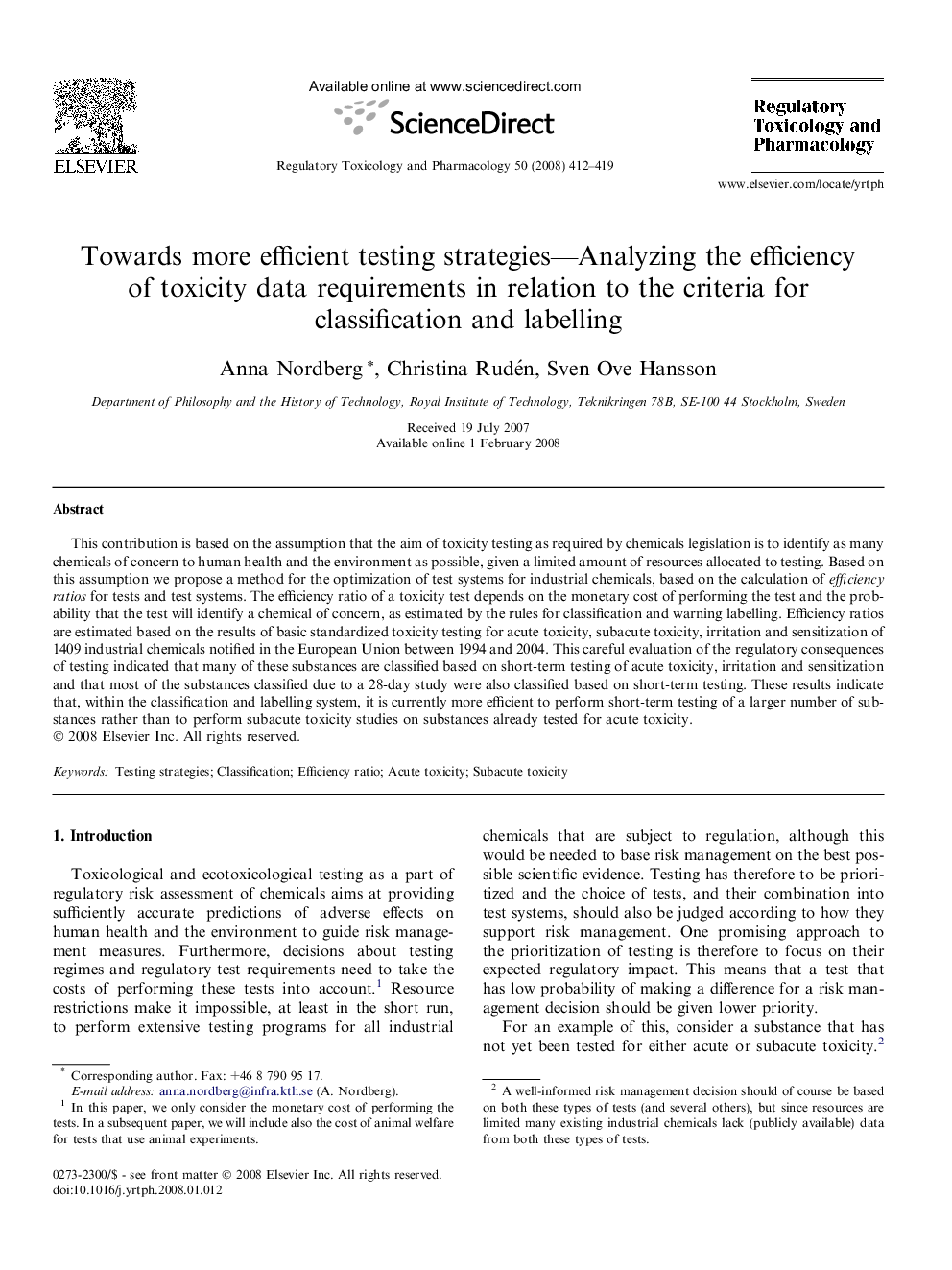| Article ID | Journal | Published Year | Pages | File Type |
|---|---|---|---|---|
| 2592919 | Regulatory Toxicology and Pharmacology | 2008 | 8 Pages |
This contribution is based on the assumption that the aim of toxicity testing as required by chemicals legislation is to identify as many chemicals of concern to human health and the environment as possible, given a limited amount of resources allocated to testing. Based on this assumption we propose a method for the optimization of test systems for industrial chemicals, based on the calculation of efficiency ratios for tests and test systems. The efficiency ratio of a toxicity test depends on the monetary cost of performing the test and the probability that the test will identify a chemical of concern, as estimated by the rules for classification and warning labelling. Efficiency ratios are estimated based on the results of basic standardized toxicity testing for acute toxicity, subacute toxicity, irritation and sensitization of 1409 industrial chemicals notified in the European Union between 1994 and 2004. This careful evaluation of the regulatory consequences of testing indicated that many of these substances are classified based on short-term testing of acute toxicity, irritation and sensitization and that most of the substances classified due to a 28-day study were also classified based on short-term testing. These results indicate that, within the classification and labelling system, it is currently more efficient to perform short-term testing of a larger number of substances rather than to perform subacute toxicity studies on substances already tested for acute toxicity.
